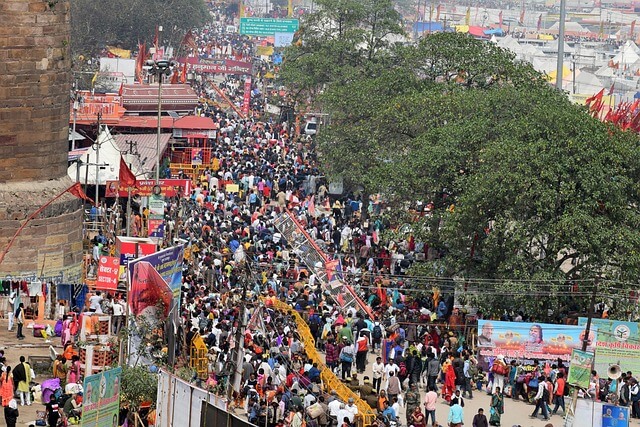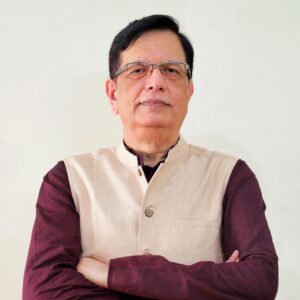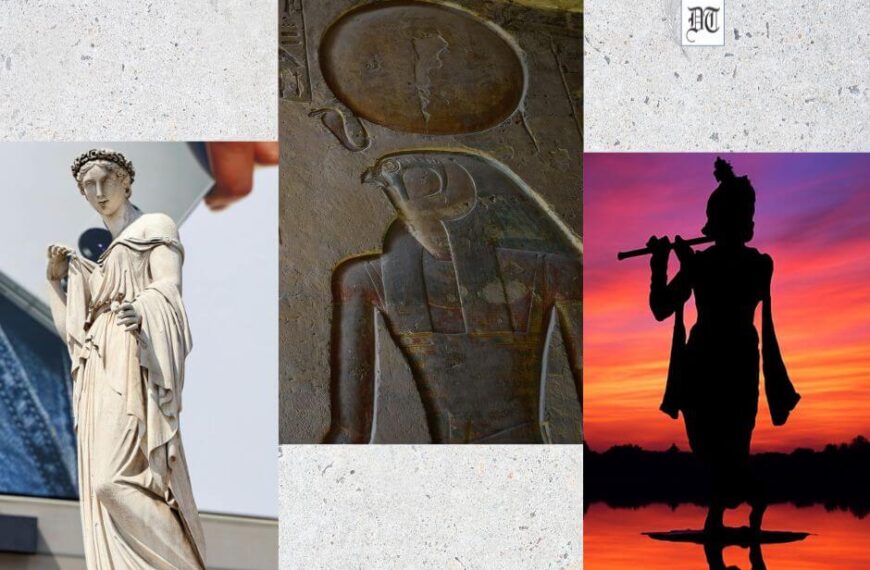Ram Krishna elucidates the Mahakumbh Mela experience that transcends religion, fostering faith, tradition, and cultural exchange exclusively for Different Truths.
For millions, taking a dip in the holy waters of Triveni Sangam is a manifestation of unshakable faith in the truest sense. But it is not just a religious event; it is an experience that is difficult to find anywhere in the world. Religiosity or spirituality apart, what is amazing to observe is how the mega event also helps sustain and renew India’s glorious tradition and rich culture.
The journey to Mahakumbh makes me reflect more on the idea of faith, what it does to people, and how it shapes their being. I believe that millions of devotees and pilgrims connect with the divine through their faith. This faith allows them to understand sacred tales, reflect on life’s cycles, and share the human experience.
In a way, this renews and reinforces my belief that humanity, devotion, and divinity are all alive and kicking at Maha Kumbh. There could indeed be many who are skeptical before embarking on the journey and may question the power of faith. But, even as observers of faith, they cannot miss the experience of the unmatched energy and vibe the event unleashes.
The entire atmosphere, surcharged with devotional acts, music, colours, and chants of Har Har Mahadev, appeared to me surreal. One can very well imagine standing on the serene banks of a sacred river, where the air resonates with centuries-old chants and the atmosphere is steeped in devotion. Simply observing the countless people from different places, all united by their faith, taking the holy dip evoked in me a sense of awe and wonder and the power of faith.
Tradition
It is common knowledge that Kumbh Mela is celebrated four times every twelve years at Prayagraj, Haridwar, Ujjain, and Nashik. (This year is super special at Triveni Sangam—this being Purna Mahakumbh—in the sense that the present celestial configuration occurred 144 years ago.). The six bathing occasions (called Shahi Snan) are believed to be very sacred and special. Starting with Poush Purnima, followed by Makar Sankranti, Mauni Amavasya, Basant Panchami, and Maghi Purnima, they culminate in Maha Shivaratri. I was always surprised by how well the devotees knew about the different times for holy baths. They could tell me the exact dates and times, explain all the rituals in detail, and explain why they were important.
The Kumbh Mela also pays homage to the rich heritage of India through the Akharas, which are considered the custodians of both spiritual and martial traditions. Thirteen recognised Akharas exist in India, each led by a President or Mahant. The Akharas are the first ones who, in a procession, go and take the dip or bathe in the holy water during the Kumbh. Alongside, one can also see scores of ascetics, saints, sadhus, the sadhvis, and the sants, either belonging to various religious organisations, ashrams, or individuals living on alms. Having renounced worldly life to follow an exclusive life of religion, they all act as bearers of the rich Kumbh tradition for ages.
Kalpvas is another ancient and spiritually enriching practice, deeply rooted in the heart of Kumbh Mela traditions. It is a unique practice where devotees spend an entire month by the banks of a holy river, primarily during the auspicious month of Magh according to the Hindu calendar. I saw a part of the landscape dotted with hundreds of camps and tents erected for the devotees’ stay by the government, ashrams, and private entities. It was a pleasant surprise to see how Mahakumbh Nagar has been transformed into a temporary city with thousands of tents, camps, and shelters, including super-deluxe accommodations. Though a time-honoured ritual, Kalpvas is much more than a mere religious observance. It is a journey of self-discovery and spiritual renewal.
Interestingly, I find Kumbh instrumental in sustaining our ethos of Atithi Devo Bhava (treat your guest as a god) and Vasudhaiva Kutumbakam (the world is one family) profoundly. I learned that about a dozen delegations from abroad also took a sacred dip at the Sangam. The delegation, representing Fiji, Finland, Guyana, Malaysia, Mauritius, Singapore, South Africa, Sri Lanka, Trinidad and Tobago, and the UAE, could experience the heritage and spiritual significance of Maha Kumbh.
Again, the spirit of service—Jana Seva is Deva Seva—is also well manifested here. With government and NGO support, I understand that nearly 20,000 people, daily, are enjoying free meals. Special arrangements have been made not only for the issuance of thousands of new ration cards but also for new connections and refilling of gas cylinders. The Akharas and Kalpvasis get priority in the provision of food items.
Culture
The visitors and devotees at Mahakumbh temporary township cannot escape the experience of a culturally enriching and vibrant atmosphere. One can enjoy the cultural extravaganza, featuring renowned artists and performers, being organised every day during the Mela days. The evenings marked with sounds of bhajans and kirtans, religious discourses, and music programmes, all in unison, amid glowing signage and glittering lights, felt like a spiritual symphony. A mesmerising drone show captivating the hearts of audiences where the legendary “Prayag Mahatmyam” and “Samudra Manthan” are depicted. The event also provides a platform for artisans to showcase their talents through the “One District, One Product” exhibition, while “Kalagram” offers a living museum of Indian crafts, cuisines, and culture.
In the chilly winter, one can find the visitors enjoying the chai provided by “Chaipoint,” an entrepreneurial venture selected by the government to deliver about 20 odd million cups of tea at the Kumbh. The stores are also pop-up stores, and the chai, best-in-class, is made by state-of-the-art robots and delivered with consistency and high quality at very low prices. It is heartwarming to see the soldiers holding hot cups of steaming chai at such places. This is another instance of how the traditional holy event, popular culture, and modern techniques get intertwined.
Gangajal is held sacred in Hindu culture. Its significance and utility can be understood from the fact that those taking the holy dip in Triveni Sangam also invariably carry it from here for use in sacred rituals in the future. The plastic containers of various shapes and sizes being sold on the way to the Sangam are a familiar sight and highlight the immense demand for Gangajal. The clean Sangam water that I saw to my great joy was testimony to the concerted efforts taken by the state in recent times to clean the river using modern technology.
Ease of Spiritual Living
Technology and innovation cut across all aspects of the event—be it related to faith, tradition, or culture. From advanced security surveillance, drone monitoring, and AI-based CCTV cameras to public infrastructure, navigation, and transport systems. The deployment of hi-tech tools and innovative measures made spiritual living by the devotees easy and accessible. In this context, it was also interesting to see mobile “food safety on wheels” in operation to ensure proper hygiene of food items at dhabas, stalls, and hotels.
The Mahakumbh 2025 has already set new records in participation, infrastructure, and global attention. With likely over 40 crore visitors, the event has not only reaffirmed its religious significance but has also helped renew our faith, tradition, and culture. As the sacred waters continue to draw millions, the Maha Kumbh remains a beacon of cultural grandeur and spiritual rejuvenation. The motto is Sarvasidhhipradah Kumbhah (Kumbh bestows all types of spiritual powers). It captures the mega event’s profound significance and essence.
Picture by balouriarajesh from Pixabay






 By
By

 By
By
 By
By
Absolutely great read Mr. Sinha ! The way you have elucidated the journey to Mahakumbh has highlighted the many sides of our cultural diversity and religious orientation. The another remarkable thing about Mahakumbh was it’s wonderful execution . Regards. Gautam Roy. Kolkata.